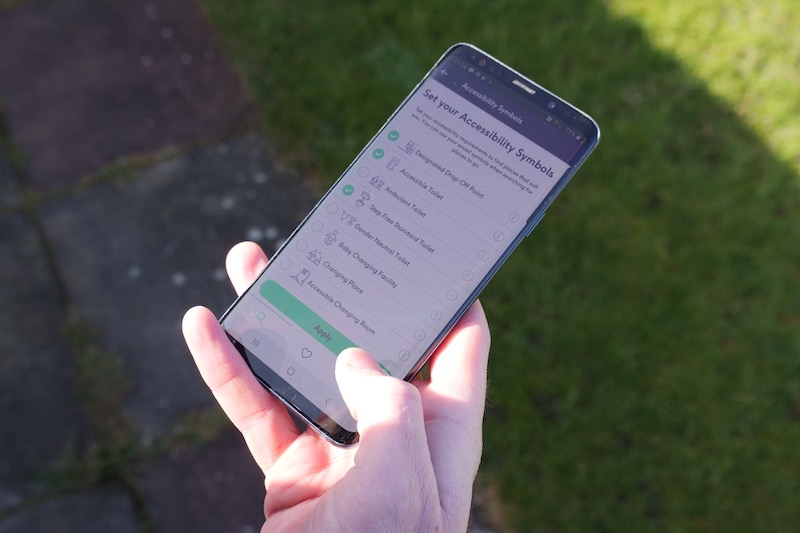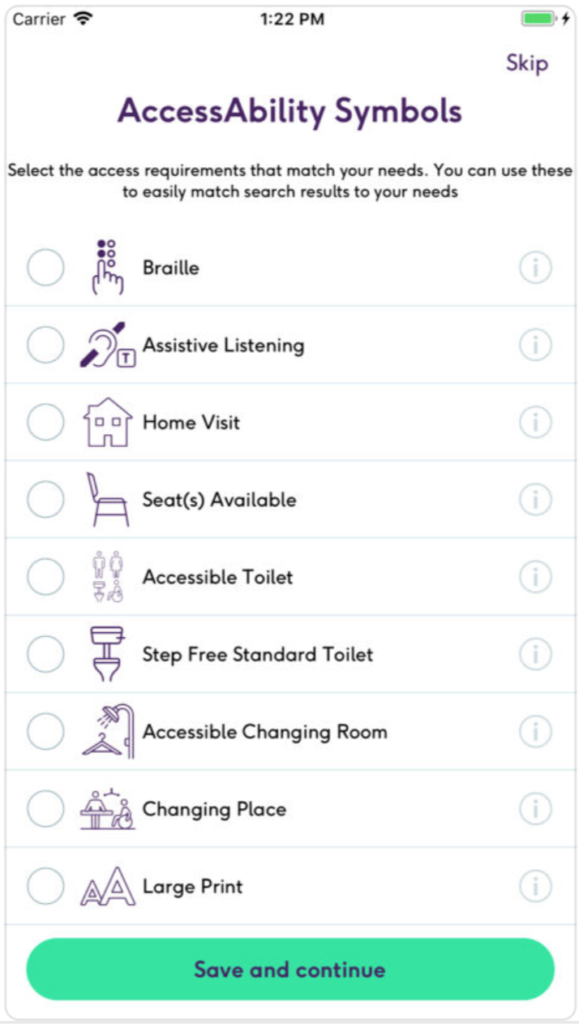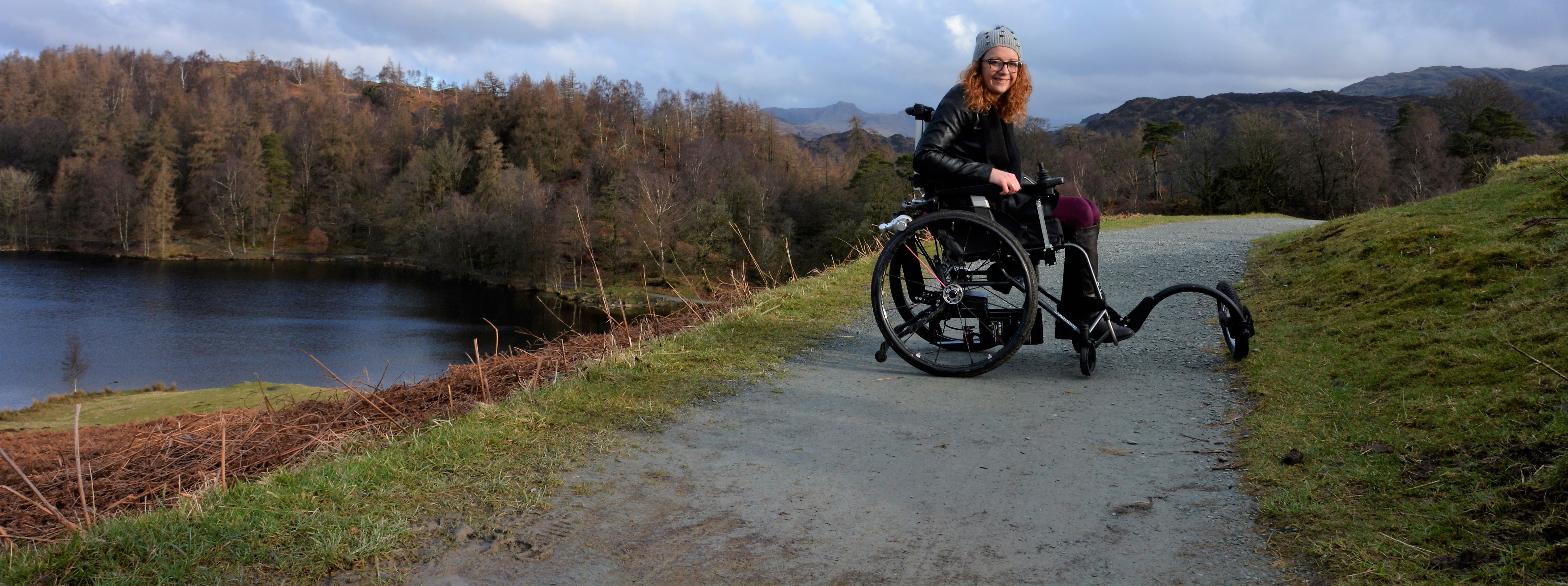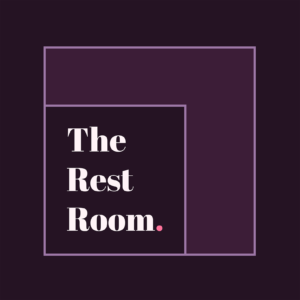This week, I had the opportunity to speak with the lovely Carrie-Ann Lightley, one of my favourite disability travel bloggers, who also works as the Marketing Manager for AccessAble, an app which provides accessibility information for tens of thousands of venues across the UK. Their aim is to, as they say, help people take the chance out of going out.
We talk about the app, what Accessibility in public spaces means, why ‘fully accessible’ may not be the most helpful term, simple ways people can start to think about accessibility, and much more.
I hope you enjoy this post. I certainly learned a lot!
Hi Carrie-Ann! Can you tell us a little bit about AccessAble?
AccessAble is here to take the chance out of going out. To give you the detailed information you need to work out if a place is going to be accessible to you.
Our Detailed Access Guides tell you all about a venue’s access. They are 100% facts, figures and photographs. You can find them on our website, www.AccessAble.co.uk, and on the AccessAble App, free to download on iOS and Android.
We know everyone’s accessibility needs are different, which is why having detailed, accurate information is so important. It’s why we send our trained surveyors to check out every single place in person and why the information we collect has all been decided by our user community.
We’ve surveyed 10,000s of venues across the UK and Ireland, including shops, pubs, restaurants, cinemas, theatres, railway stations, hotels, colleges, universities, hospitals and more.
What is your role?
My role is Marketing Manager. I lead on our work with external partners, including Destination Management Organisations, disability charities and directory websites.
I have overall responsibility for all of the content on AccessAble’s blog, and I oversee the management of our network of AccessAble Champions – disabled bloggers and vloggers who act as ambassadors for us.
How did AccessAble start?
AccessAble, originally called DisabledGo, was set up in 2000 by Dr. Gregory Burke as a result of his own experiences as a wheelchair user and disabled walker.
Gregory was frustrated to find that the best-case scenario when he looked for accessibility information was a few unhelpful words that only resulted in more uncertainty.
Not having the information he needed meant everything had to be planned and that too often going out became a stressful and anxious experience. At times Gregory felt he could not go out at all.
Working alongside over 100 different disability groups Gregory launched DisabledGo’s first website in 2002. Since then the organisation has grown and developed, continually meeting and listening to its user community.
By 2018 DisabledGo was used by over 1.5 million people each year to plan a visit or trip out. Thousands of people continued to shape the service getting involved in DisabledGo’s engagement events and social media channels.
In June 2018 we began to build our new website and iOS and Android Apps, something our user community had been passionate and vocal about.
In 2019 the website was used by 1.8 million people.
Today, the Website and App give disabled people and carers accurate, detailed accessibility information to assess for themselves whether a place would be accessible for them.
How does AccessAble go about presenting the information to make sure it’s inclusive of as many access needs as possible?
We know that information about things like door widths, hearing loops, accessible toilets, facilities for assistance dogs, parking spaces, and background music can make all the difference to someone’s experience. It can be the difference between a great day out or a ruined trip. A stress-free appointment or a missed one. The difference between sticking with what you know or trying something new.
Our website and App use 32 Accessibility Symbols to allow for easier recognition of this essential information. As well as text and symbols, each section of a venue Access Guide has clear photographs, easy read functionality, and compatibility with assistive technology.

Are the things you look at based on an existing criteria, or is it one you developed yourself?
Some of our Accessibility Symbols build on already established ones – for example the Changing Places symbol; but we have also developed new symbols to reflect what disabled people have told us they want. We attend 100s of events a year to get feedback from disabled people and carers on what we can do better and what we can do next.
All the data we collect is informed by BS8300 (a British Standard that sets out how buildings should be designed, constructed and maintained to create an accessible and inclusive environment for disabled people) but ultimately is driven by our users. Our work is always under review and we’re constantly innovating, to make the Access Guides the best they can be.
What would you say has been the biggest success of AccessAble?
Getting to 50,000 live Access Guides and 1.5 million unique users were huge moments for us.
We’re incredibly proud to be the providers of inclusive information on major retailer’s websites (like Marks and Spencer and Next) and on Destination Management Organisation sites (Visit London, Visit Blackpool, Welcome to Yorkshire). But ultimately it’s feedback from disabled people that’s the most important. Knowing that we’ve made a difference.
And what would you say is your biggest challenge?
Accessibility information is not a ‘nice to have’. It’s essential!
You recently wrote a blog post about why you feel the term ‘fully accessible’ isn’t that helpful to you as a disabled person – can you explain a bit about that?
I think it’s really tricky, especially from a marketing perspective, to come up with a succinct term to describe a venue that has a high standard of accessibility.
My point in the blog post was that ‘fully accessible’ is actually impossible, it doesn’t exist. Fully accessible to who?
Just because two people have the same medical condition, or use the same type of mobility aid, doesn’t mean that their access needs are the same.
Disabled people are just as individual as everyone else on the planet, and so are our wants and needs.
In my opinion, the best accessibility takes the needs of as many different impairments as possible into account, and communicates that in a detailed, accurate way.

What would you say are the fundamentals of good accessibility that everyone, disabled and non, should be aware of?
I think that the most fundamental thing is communicating accessibility properly. It’s not for me, or for anyone, to say what constitutes good accessibility – because that will be different for every single disabled person.
The key is providing honest, easy to find information about whatever level of accessibility you have, because your venue will be accessible to someone. Here’s a quote from my recent blog post which I think sums it up well:
I’m often asked what the one thing is that I think could change the world for disabled people, and my answer is always the same – information.
Give us the information we need to decide if a place is suitable for us. Not sweeping statements like ‘fully accessible’, not window stickers with wheelchair symbols on them, not web pages which say ‘call to confirm your needs’, but detailed, honest accessibility information. Because information is power, for everyone, but especially for disabled people.
In my experience, I’ve seen a lot of excuses about lack of accessibility due to the building being listed – but legally this doesn’t seem to be the case. What advice would you give to someone who is newly disabled and trying to figure out navigating all of this?
The more I know about something, the less intimidating it is. I know that it can be daunting to have to advocate for the things that we are legally entitled to, so I’d say arm yourself with the tools and the knowledge that make you feel confident enough to be able to speak up.
Follow advocates and activists on social media and learn from them, read blog posts, listen to podcasts. The charity Disability Rights UK publish a ‘Disability Rights Handbook’, and local organisations like Citizens Advice Bureau may be able to offer support on legal matters.
What are some good ways for businesses to start looking into accessibility who haven’t done this before?
Disability equality and awareness training for staff is an excellent starting point.
From a practical perspective, easy to implement changes are –
- making sure that aisles and walkways are kept as clear as possible
- providing a seat for people who may find it difficult to stand for a long time
- if a business has stepped access, installing a ramp or purchasing a portable ramp
- ensuring that accessible toilets aren’t used for storage
- thinking about how background music and sound levels might affect people with hearing impairments, autism or dementia
- When decorating think about how colour contrast might help visually impaired people
- Use clear, simple and consistent signage
- Think about accessibility of printed materials like menus, and consider making the print larger or clearer
Why do you think many businesses still seem to be falling down so much when it comes to accessibility?
I think often there is so much fear of getting things wrong, or of offending disabled customers by saying the wrong thing, that some businesses don’t know where to start.
There’s also still the presumption that accessibility is all about ramps and grab bars, and that businesses which have stairs can’t possibly be accessible. To those businesses I’d say, could you install a hearing loop, or train your staff in welcoming customers with dementia?
Only 12% of disabled people in the UK are wheelchair users – you can always be accessible to someone. I think many businesses are still failing to recognise the size of the market and spend – there are over 13 million disabled people in the UK and 4.5 million carers, and disabled people spend £249 billion every year.
From your time working in this industry, do you see things changing for the better?
Absolutely. 15 years ago I couldn’t get on a bus in my home town; now all of our local buses have automatic wheelchair ramps.
The development of Apps like AccessAble’s means that disabled people can be spontaneous, going out with Access Guides in our pockets, rather than spending hours hunting for misleading information.
And the prevalence of disabled people like you and I, and so many others, who are online sharing our experiences and creating resources to support those who may be going through similar difficult life journeys to the ones we’ve faced, can only be a good thing.
What can we expect from AccessAble in the future?
In the coming weeks and months you’ll see more visibility of our Access Guides in more places – tourist board websites and apps in particular. We’re continually developing the format of our Access Guides to be the best they can be, and always, always striving to create more Access Guides to more places, so that we can help as many of the people we aim to serve – disabled people, carers, and anyone who needs to know about accessibility – as possible.
A huge thank you to Carrie-Ann for taking the time to answer my questions! You can learn more about AccessAble on their website. I’ll be doing a review of the app in the next little while, so keep your eyes peeled for that!
If you enjoy my content, the biggest way you can support me is by subscribing to my newsletter.



2 thoughts on “AccessAble: What Does Accessibility Mean For Disabled People, Anyway?”
AccessAble should be used for all disabled people if they want to go out to different places. There is no reason that a disabled person should stay in the house all the time.
Fabulous. So much information covered in one blog when I think of England I think London and how overwhelming it must be to visit for those with mobility challenges.
After reading this blog I’m reminded that England is so much more, with less daunting destinations in the Country. and that a business needs to see passed the stairs and think what else can be introduced to their building to assist other people with say a hearing loop, signs in braille, a check on music levels and use of wall colours as calming measures. Thank you.